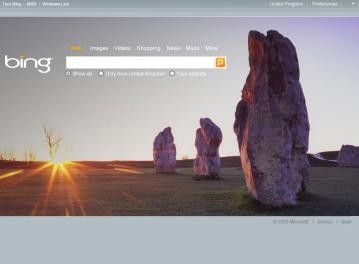Microsoft Throws Down Bing Search Challenge

Microsoft has created a “Bing It On” challenge to web surfers in order to encourage them to drop Google and try Bing
Microsoft is looking to attract new Web searchers to use its Bing search tool, with a new marketing campaign designed to break people’s Google search habits.
Microsoft’s catchy “Bing It On Challenge” is aimed at growing Bing’s market share in the search wars.
Bing It On
The “Bing It On” campaign was born out of a recent search study commissioned by Microsoft that looked at user opinions on the search engines they were using and the accuracy of the results they were getting, according to a post by Mike Nichols, chief marketing officer for Bing, on the Bing Search Blog.
“A while ago, we began to notice an interesting trend in our internal testing – for the first time our testing showed that Bing’s Web search results were better than Google’s,” wrote Nichols. “We continued testing our results in several different ways as part of our regular work to improve our quality, and along the way an interesting pattern emerged – Bing was regularly beating Google in Web search results quality.”
Those early findings inspired Microsoft to dive deeper to find out what it meant.
 “So, we asked an independent research company to do a statistically significant similar challenge test and our findings were confirmed – people preferred Bing Web search results nearly 2:1 over Google in blind comparison tests,” wrote Nichols. “Since relevancy of search results is the No. 1 driver of search engine preference, the time is right for a wake-up call for searchers – better Web search results are available at Bing.com.”
“So, we asked an independent research company to do a statistically significant similar challenge test and our findings were confirmed – people preferred Bing Web search results nearly 2:1 over Google in blind comparison tests,” wrote Nichols. “Since relevancy of search results is the No. 1 driver of search engine preference, the time is right for a wake-up call for searchers – better Web search results are available at Bing.com.”
With that, Microsoft is unveiling the “Bing It On Challenge,” a Web page where users are being encouraged to see for themselves how their Web searches are being conducted side-by-side by Bing and Google. The key is that both visible searches are not identified with their Bing or Google logos. Once at the Website, users enter a search term and are asked to judge which of the two search screens gives them the best search results. After five “rounds” of side-by-side, nonscientific, blind search comparisons, the site tells you which search engine you found most useful – Bing or Google.
Breaking Habits
So what’s the point of this blind “taste test?”
“Our mission is to show people it’s time to break the ‘Google habit’ and that Bing has reached a quality level that will make it easy to switch,” wrote Nichols.
The Bing It On Challenge is part of a new advertising campaign that Microsoft will be pushing over the coming months, according to the company. The ads feature random users in San Francisco who participated in the challenge and shared their opinions on Bing and Google.
The search comparison research sponsored by Microsoft was conducted by independent research company Answers Research using a representative online sample of nearly 1,000 adults over age 18 across the United States, according to Microsoft. “The participants were chosen from a random survey panel and were required to have used a major search engine in the past month,” states a 5 September Microsoft Bing Search Blog post.
In the survey, participants were shown searches of their choice in the side-by-side, unmarked search format. After the searches, the participant’s votes were tallied to determine the winner – Bing, Google or a draw.
Of the nearly 1,000 participants, 57.4 percent chose Bing more often, 30.2 percent chose Google more often and 12.4 percent resulted in a draw, according to Microsoft. The overall sampling error rate for the study is plus or minus 3 percent.
Tough Challenge
Despite the new ad campaign, Bing sure has its work cut out for it to catch up to Google based on the latest search engine usage statistics for the United States, according to the Web analytics firm ComScore.
Though Microsoft’s search engine usage in the United States increased slightly by 0.01 percent since June, Google still dominates Web search with 66.8 percent of the US market, according to ComScore’s July figures. Bing captured 15.7 percent of users, and Yahoo sites captured 13 percent of users. They are trailed by Ask Network sites, capturing 3.1 percent of users, and AOL, with 1.5 percent of the market, according to the figures. The numbers are for what ComScore calls explicit core searches, or those that exclude slide shows and contextual links in text.
About 17.7 billion overall searches were conducted in July by US users, according to ComScore, which is an increase of 3 percent since June. Google search was used for 11.8 billion of those searches, an increase of 3 percent, while Microsoft search was used 2.8 billion times, for an increase of 4 percent. Yahoo search came in third with 2.3 billion searches, up 3 percent from June, while Ask Network was used for 548 million searches, an increase of 6 percent, and AOL was used in 264 million searches.
Are you fluent in the language of the Internet? Find out with our quiz!
Originally published on eWeek.